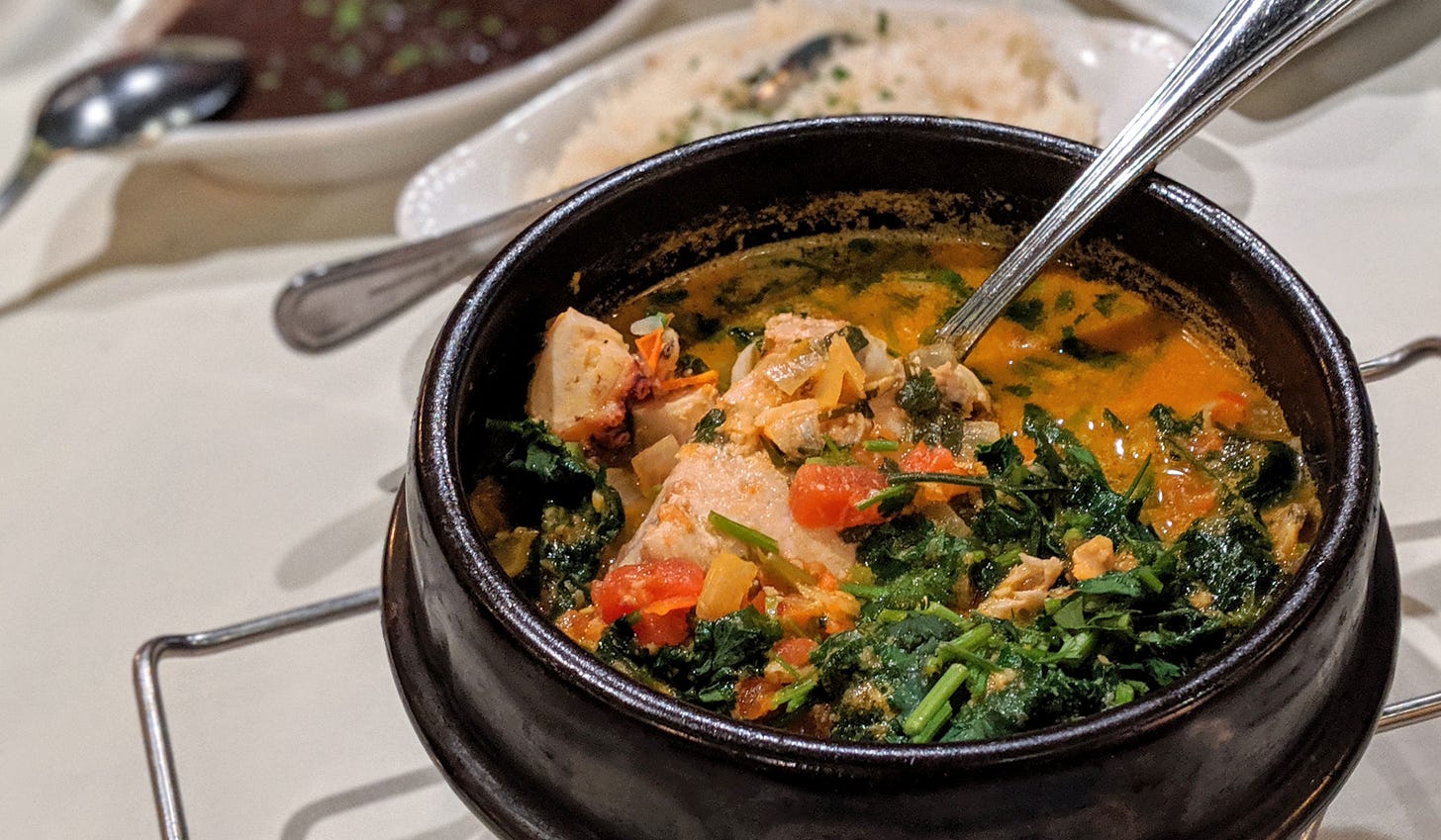Moqueca Brazilian Restaurant
🇧🇷 BRAZIL / FREE FRIDAY FAVORITES: Explore the seafood stews of north Brazil at two Ventura County locations.
🇧🇷 BRAZIL
📍 1610 E. Thousand Oaks Blvd.,
Thousand Oaks, Ventura County.
🅿️ Ample parking in plaza
🥤 Full barFREE FRIDAY FAVORITES is a series of articles that revisit choice restaurants featured on eattheworldla.com over the years. These will never be behind the paywall, but will update information as necessary and always be about meals that are worth returning for again.
📆 Original Article 19 May 2020Right off of Thousand Oaks' main drag and anchoring the west end of a new-ish strip mall, Oxnard's beloved Moqueca Brazilian Restaurant has expanded to a second location that is almost four years old now. For those driving from Los Angeles County, travel times to enjoy the wonderful seafood stews of Brazil's Espírito Santo state have been cut down with easy to access right off the 101.
The dining room at both locations is sleek and modern, a white table cloth affair but far from stuffy or pretentious. Colorful artwork adorns the walls while bottles of cachaça line the back bar, both telling a different story than the formal dining scene and joining the music to create a fun vibe.
The mostly Brazilian staff is attentive and efficient, and possibly because of location and past experience, will go directly into an explanation of Brazilian food as if you have never even heard of the country before.
As you peruse the drinks menu, inspired by that bar in the back, it would be a mistake to not follow their cues and enjoy one of their caipirinhas. The house caipirinha ($12, above) uses Leblon cachaça and is made with real skill and freshness.
Much of the menu of the restaurant focuses on the foods of Espírito Santo, the birthplace of the original chef in Oxnard. One item that deviates from this is the plate of coxinhas ($14, above), originally a food from São Paulo but enjoyed throughout much of Brazil now.
These are quite a bit smaller than the fried snacks you will find sold out of restaurant windows everywhere in cities, but retain the signature teardrop shape that is a nod to the original that once was made with a chicken thigh (coxinha means "little chicken thigh.") Nowadays most are filled with shredded spiced chicken, onions, parsley, scallions, and sometimes catupiry cheese.
More typical of the central coast state are starters like the casquinha de caranguejo (above), which is named "crab shell" for the item that is most often used to serve it. This crab meat appetizer is served here in a small clay replica, mixed with spices and cream cheese, and baked with a parmesan crust.
The namesake dish of the restaurant is also served in the state of Bahia, but even these neighbors have very distinct regional variations.The more northern version in that state is known as moqueca baiana or moqueca peixada, and is a further evolution of the moqueca capixaba from Espírito Santo. The version from Bahia takes local African and Portuguese influences, adding more palm oil and coconut milk.
The moquecas offered here are of course the capixaba versions, which are lighter because of their use of extra virgin olive oil rather than palm oil. Only a touch of coconut milk is added, along with urucum essence in the tomato-based stew. The moqueca is always a seafood dish, but there are many options. For a bowl of good variety, the moqueca de peixe com mariscos ($34, above), is a good choice including large high-quality cuts of whitefish and a mix of shellfish.
This portion is meant for one according to the menu, but it is plenty to share between two or three people if you plan to order other dishes. A plate of wonderfully-oily Brazilian-style white rice is served with it, but add the delicious feijão ($5, above in back) to get an important plate of black beans on the table.
Any moqueca served in Espírito Santo will come in the black clay bowl seen above, which Moqueca Restaurant imports from the state. These beloved pots are glazed with the sap of mangrove trees and must be seasoned with oil multiple times before use.
Save some room (or just submit to gluttony) and grab the dessert menu, which includes both the unique pavé de amendoim ($7, above), and pudim de caramelo ($8, below).
As the desserts were polished off and belts loosened, a restaurant full of joy continued unabated. A birthday party with children, a group of Chinese feasters, and a few Brazilians were scattered around all talking happily amongst each other.
Both Thousand Oaks and Oxnard will be better places when these dining rooms are open again, and all of the greater Los Angeles area is lucky to have such quality regional Brazilian available.
🇧🇷🇧🇷🇧🇷












